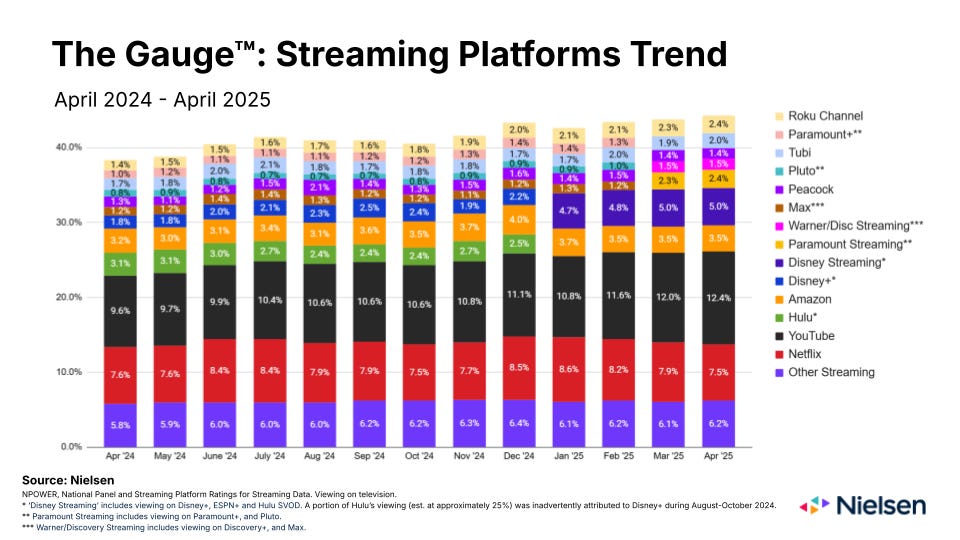Streaming’s Final Frontier: 60M Cable Holdouts Still in Play
As all growth plateaus, the big opportunity left is viewers still watching linear — if you can figure out how to reach them

There’s a growth story in streaming that no one’s really telling — because it hasn’t happened yet.
Roughly 60 million people in the U.S. still watch cable or broadcast TV. As the subscription streaming market shows signs of saturation and even stagnation, this legacy audience represents the single biggest opportunity left — and the biggest question: Who will finally convert them?
This opportunity really stuck out to me as I analyzed one of my favorite data sets in the Streaming Wars:
Nielsen’s The Gauge, which measures total monthly viewing on TV sets in America, is the best independent snapshot of who’s watching what — and where the growth (or lack thereof) really is.
The Gauge provides not just a snapshot of streamer performance, but a rare window into the pace of transition from traditional TV to streaming — and right now, that transition is moving more slowly than many execs would like to admit.
So in this piece, I’m going to break down:
How The Gauge works, and why it’s the best monthly view of the streaming market
What it shows about who's actually growing, who's flatlining, and what that means
The surprising stability of most major streamers
Why FAST channels are rising, and why that matters
And, most critically: what these numbers tell us about the 60 million cable holdouts — and who’s best positioned to win them
The numbers may look stable. But they point to a massive, still-open frontier: tens of millions of viewers who haven’t cut the cord — and aren’t subscribing to streaming yet either. That’s where the next real battle begins, and here is what data points to to inform how to win:
Paid subscribers click here to keep reading …



